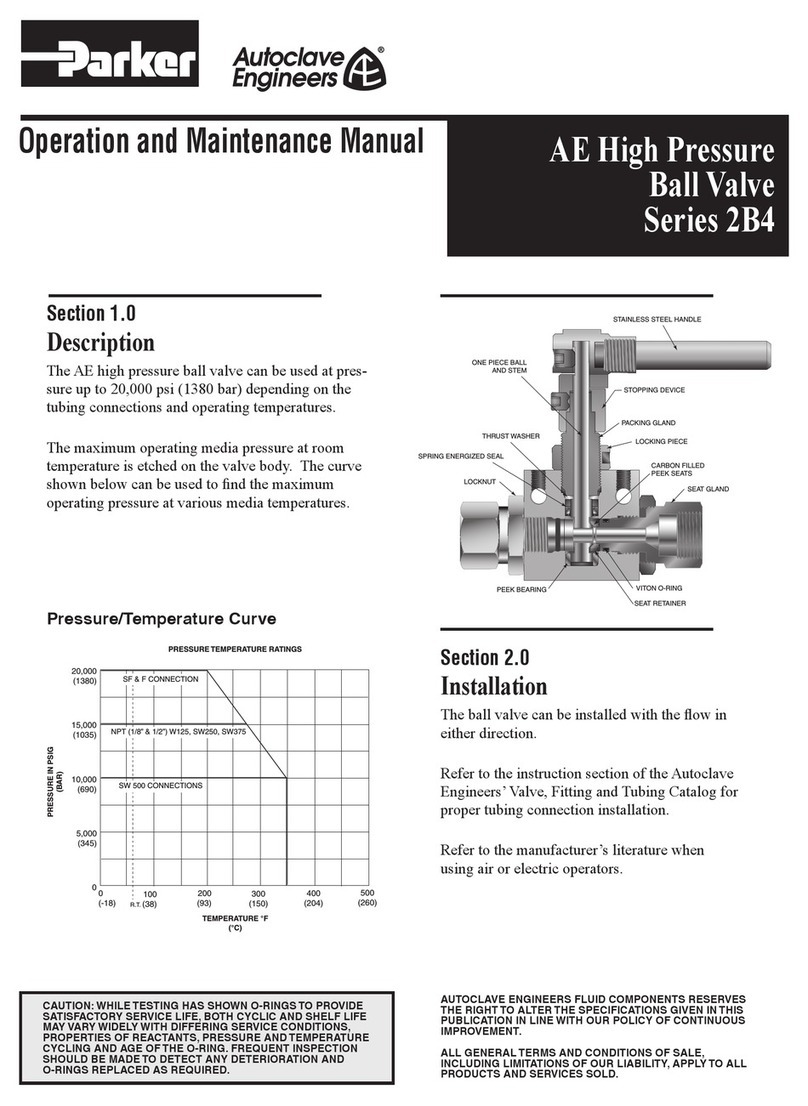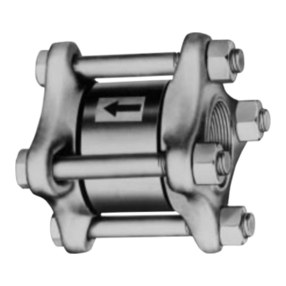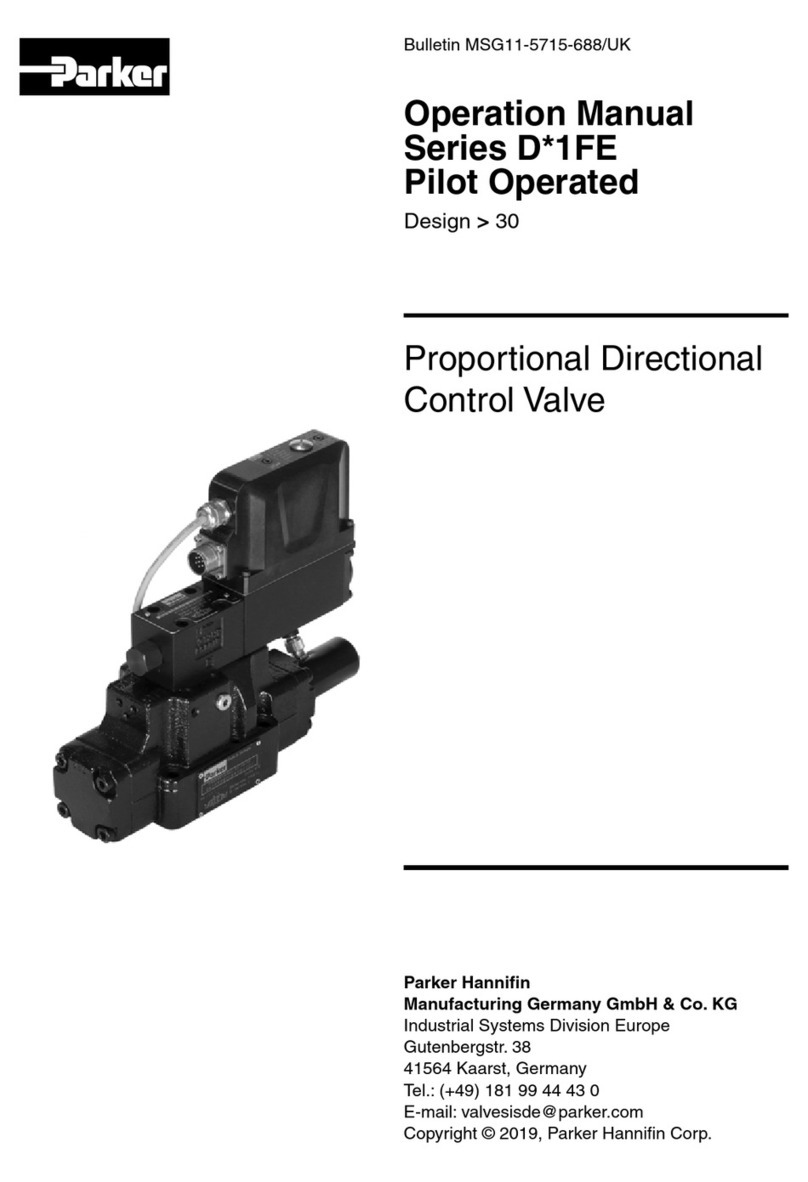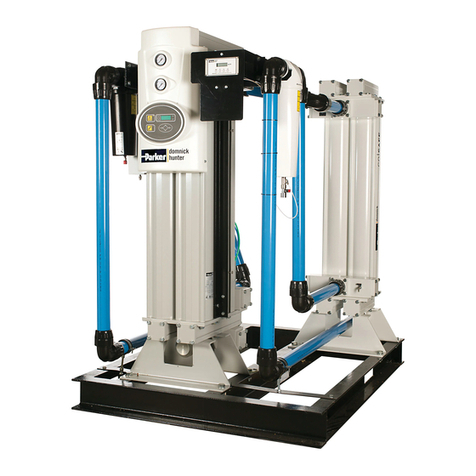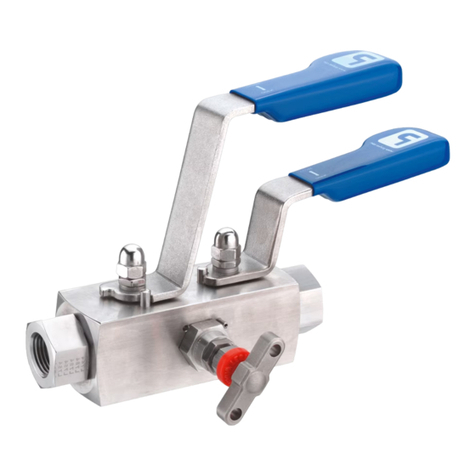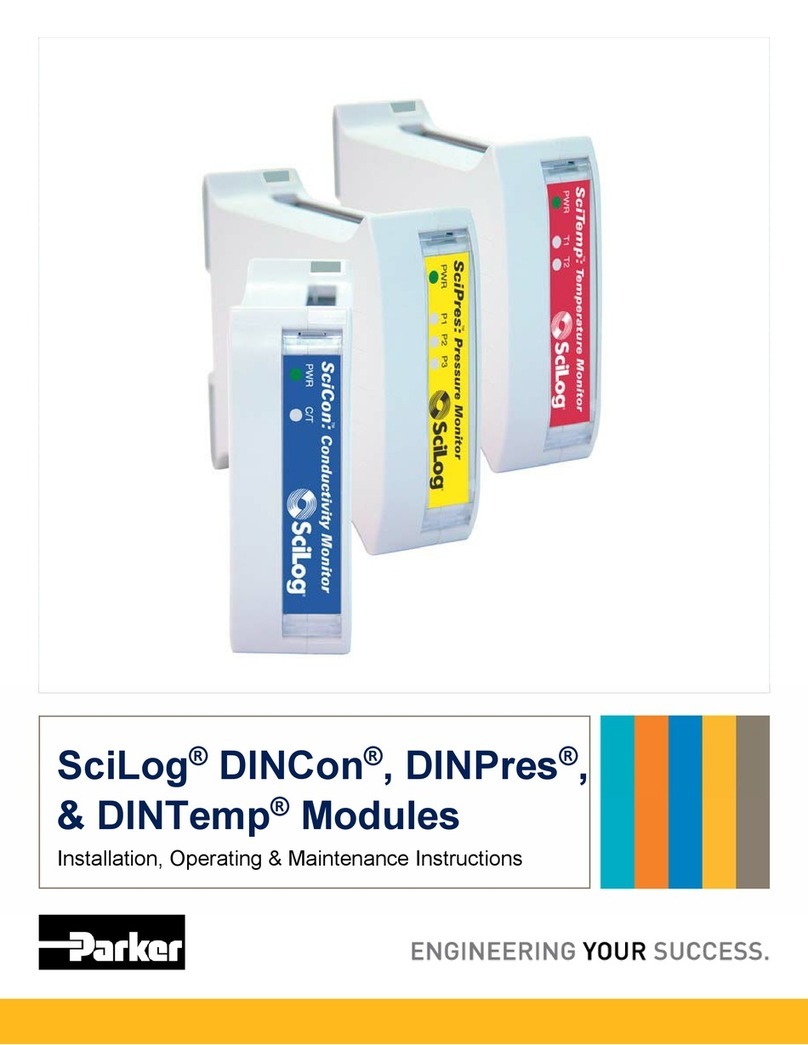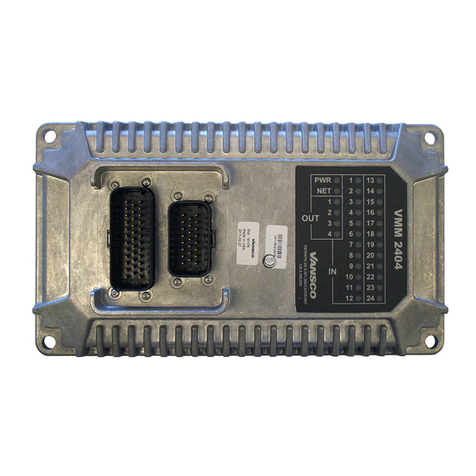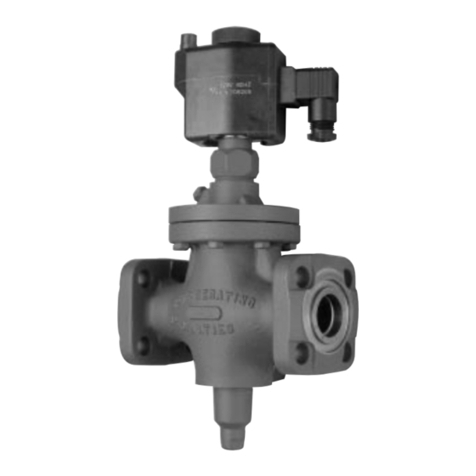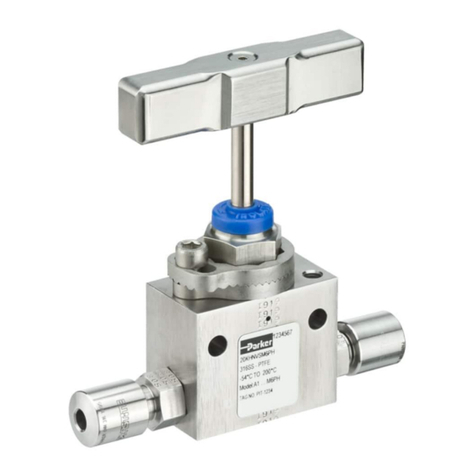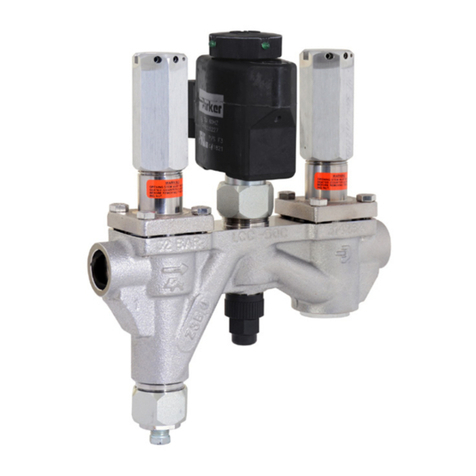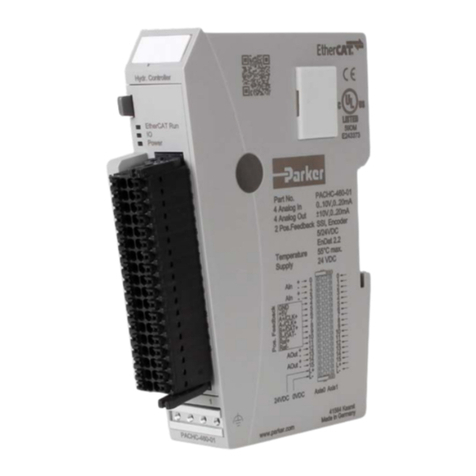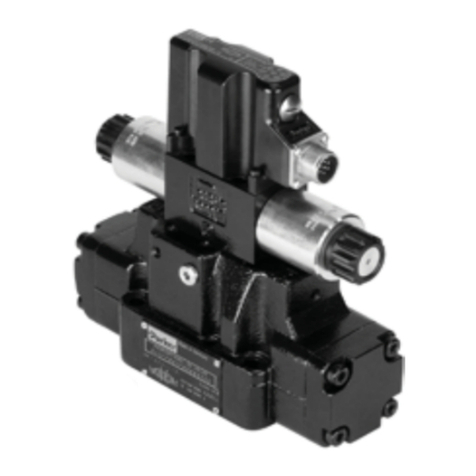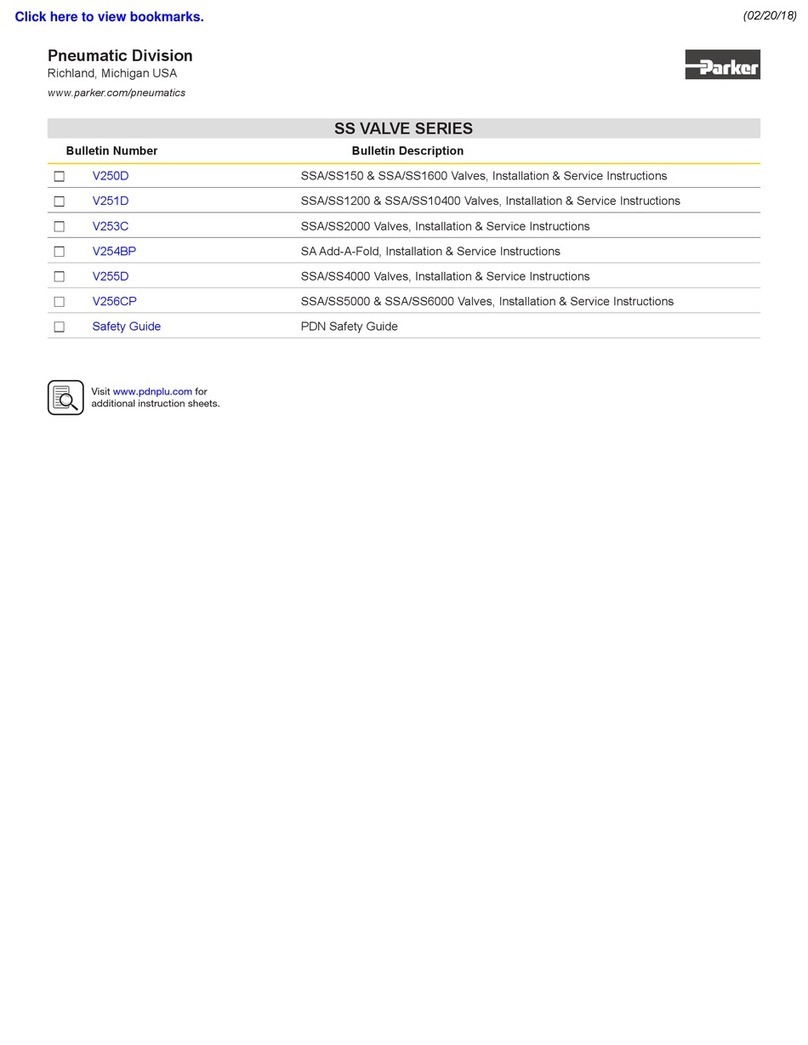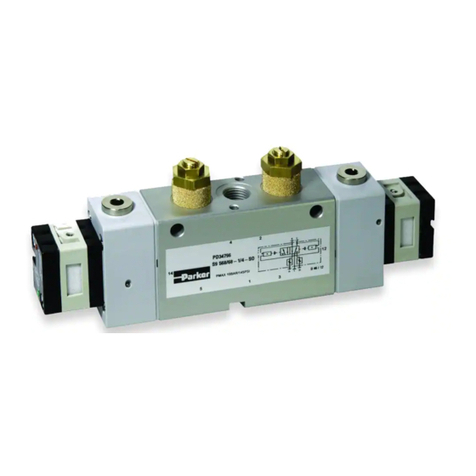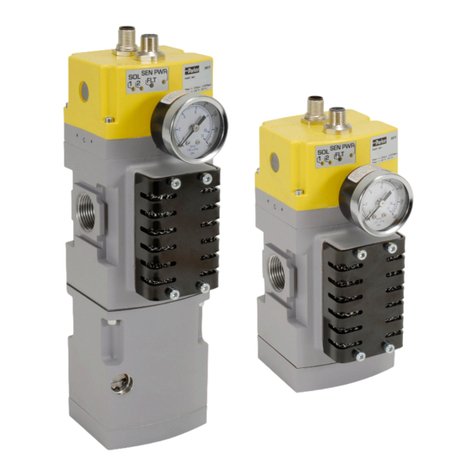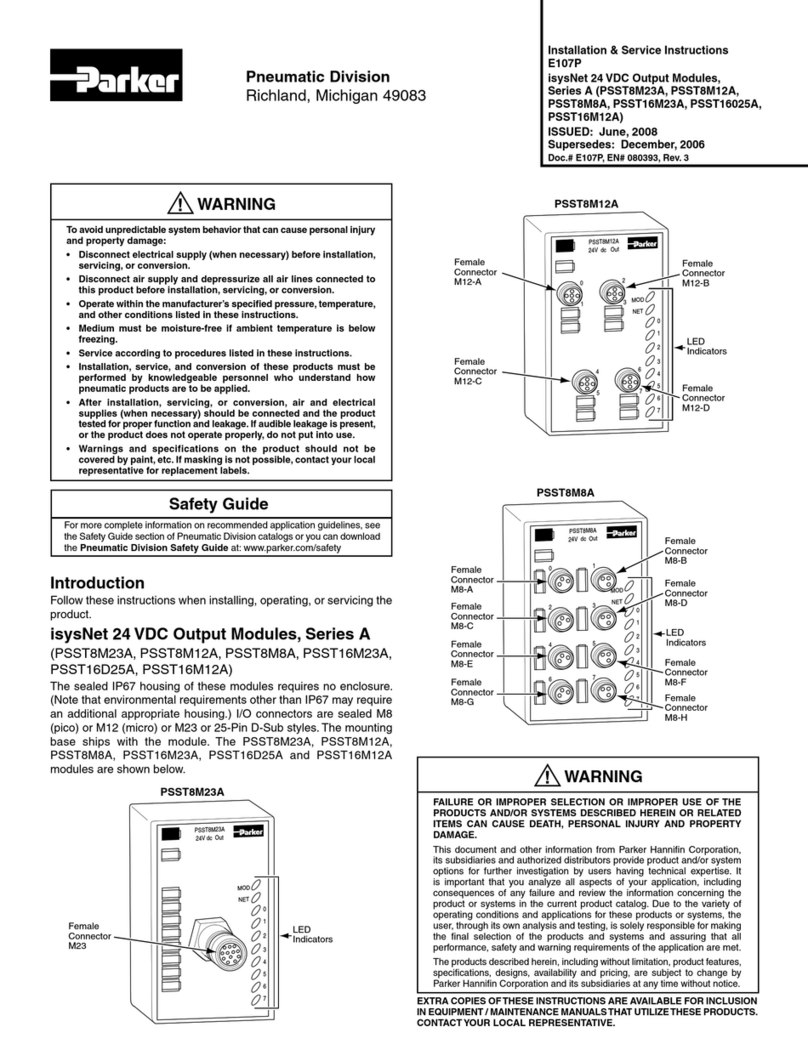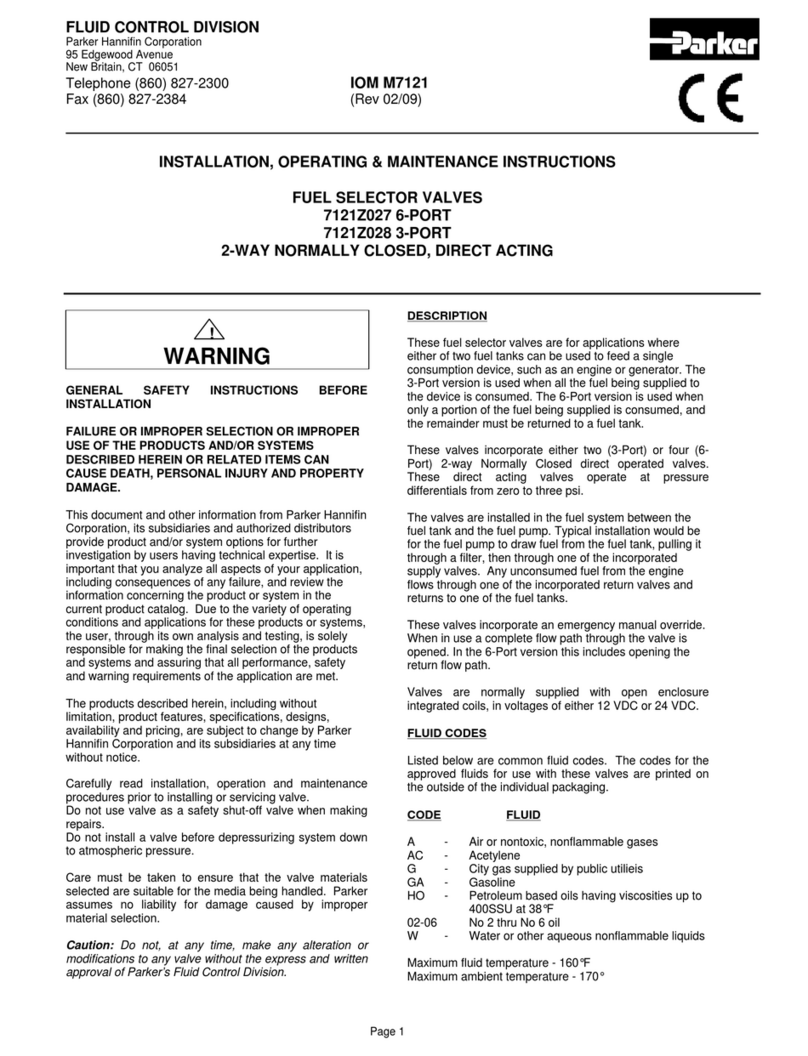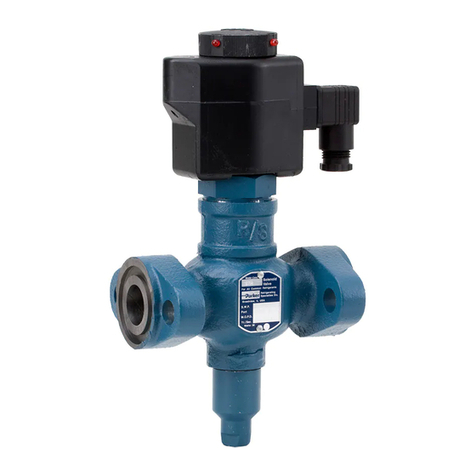
Page 2
Installation Instructions
Mounting position and pressure limits: Valves can be
mounted directly on piping and are designed to operate in
any position. The valves may be installed in any line
regardless of the direction in which the line runs.
However, for optimum life and performance the valves
should be mounted vertically upright so as to minimize
wear and reduce the possibility of foreign matter
accumulating inside the stem area.
Pilot valve line pressure, voltage and frequency must
conform to nameplate rating. Allow adequate clearance
above valve for removal of coil.
WARNING: The actuator is spring loaded. Depressurize
system and turn off electrical power to the pilot valve
before attempting repair. The coil must not be energized
unless it is installed on the valve. Otherwise, the coil will
overheat and burn out.
Failure to depressurize the system could result in injury.
Dismantle the actuator circle clip exclusively with the
appropriate tools provided in the repair kit only. Follow
the instructions provided in the repair kit.
CAUTION: The valve body need not be removed from the
line. When dismantling the actuator assembly, it may be
necessary to provide proper support to prevent the valve
from rotating thereby causing damage to piping.
Where the valve is to be removed from the piping system,
the pipeline must be drained completely before removing
the valve especially with hazadous or aggressive media
that can be hazardous to health.
Installation Steps
Installation must be done according to all applicable
Safety Codes and Standards and by qualified personnel.
Inspect valve prior to installation. Damaged valves or
actuators must not be installed.
Ensure that the valves are installed whose pressure class,
line pressure, type of connection and connection
dimensions correspond to the usage conditions.
WARNING: Do not install a valve whose permitted
pressure / temperature ratings are inadequate to meet the
operating conditions.
Threaded connections are the most common. ANSI
flanges, welded ends and tri-clamps are also available.
Piping: Remove any protective enclosures from the body
ports and connect line pressure to the inlet port of the
valve. An arrow on the body indicates direction of flow.
Use of Teflon tape, thread compound or sealant is
permissible, but should be used sparingly to male pipe
threads only. Connect outlet line to the opposite port.
Ports should not be subjected to excessive torque by use
of an oversized wrench, wrench extension or by impacting
the wrench handle. Do not use the valve to “stretch” or
“align” the pipe. Using the pipe to close a large gap can
distort the valve or at least stress it unduly, and possibly
cause it to malfunction, or the threaded ports may be
damaged or stripped.
Flanges: For flanged mounted valves, follow applicable
ANSI, DIN, JIS specifications for bolting and torque
recommendations. The bolt should pass first through the
mounting flange before engaging the valve flange. Allow
proper spacing for installing the valve. Do not use the
valve to “stretch” or “align” the pipe. Using flange bolts to
close a large gap can distort the valve or at least stress it
unduly, and possibly cause it to malfunction, or the bolts
may be damaged or stripped.
The flange endings on the pipeline must align with the
connection flanges on the valve and the faces must be
parallel. Flanges which are out of alignment or not
parallel may result in unacceptable stresses in the
pipeline during installation and could thereby damage the
valve.
Welding: Care should be taken when soldering
connections to avoid damage to synthetic internal parts. If
pipeline welding is to be performed, care must be taken to
ensure the cleanliness of both joints. It is recommended
that the flame be directed away from the valve body. Cool
body with a wet cloth or heat sink on the extensions at the
body to prevent overheating while soldering.
Actuation Connection
Connecting the actuation unit to the control.
A 3-way pilot valve is required to connect the control
pressure for actuator functionality. For actuator types:
Actuators with springs: Connect the control pressure to
the inlet of the pilot valve and the outlet of the pilot valve
to the threaded connection on the actuator.
Double-acting actuators: Connect the control pressure
line for “off” to the threaded connection on top of the
actuator head. Connect the control pressure line for “on”
to the threaded connection on the bottom of the actuator
head.
Actuators with positioners: Connect in accordance with
supplied terminal plan.
Pressure Testing and Valve
Functioning
It is recommended that newly installed pipeline systems
first be flushed thoroughly to wash out all foreign matter.
The test pressure of an open valve must not exceed 1.5
times the maximum rated pressure of the angle body
valve. The test pressure of a closed valve must not
exceed 1.1 times the maximum rated pressure of the
angle body valve.
Normal Operation and Maintenance
The angle body pneumatic valves are operated by
pneumatic control signals. The valves do not require
regular maintenance work. While the valves are design to
operate over millions of cycles, it is recommended that
valves be rebuild every 2 million cycles to ensure optimum
quality performance.
During routine system checks, no leakage should be
found in the valve. If unacceptable leakage occurs,
reference “Troubleshooting” section for recommended
solutions.
If a valve is to be removed from a pipeline carrying
hazardous media, the parts of the valve in contact with the
hazardous media must be properly cleaned and
decontaminated before repairs are performed.
